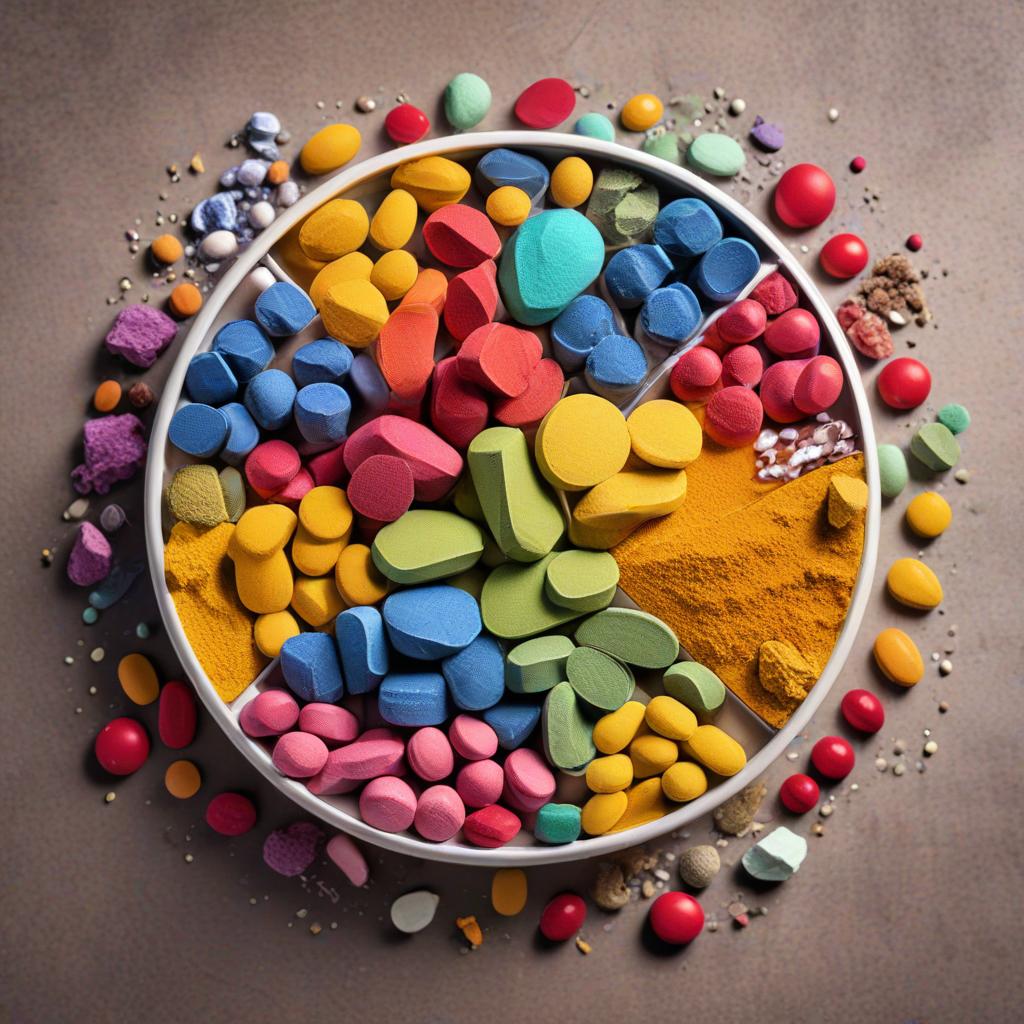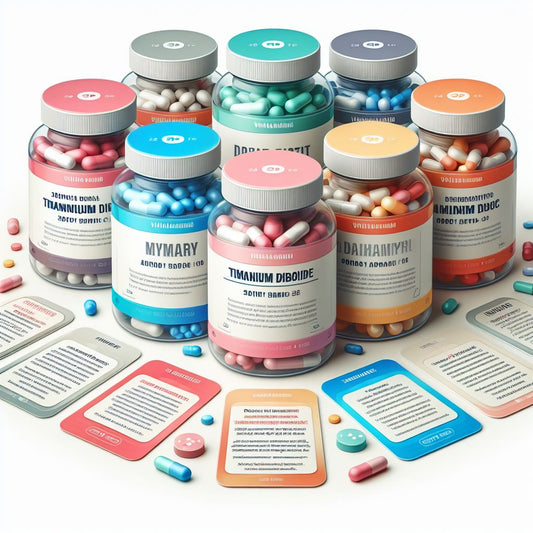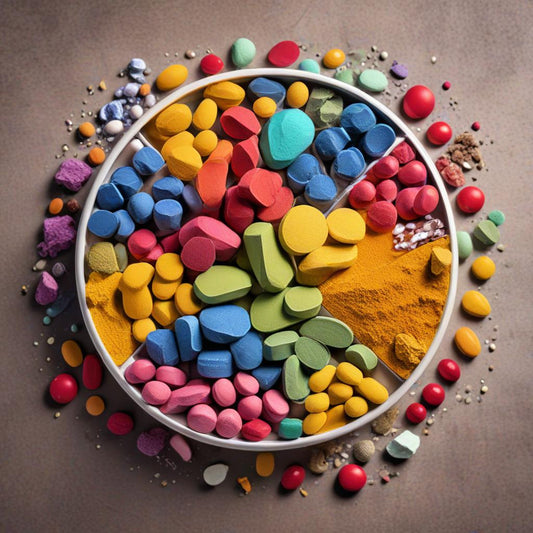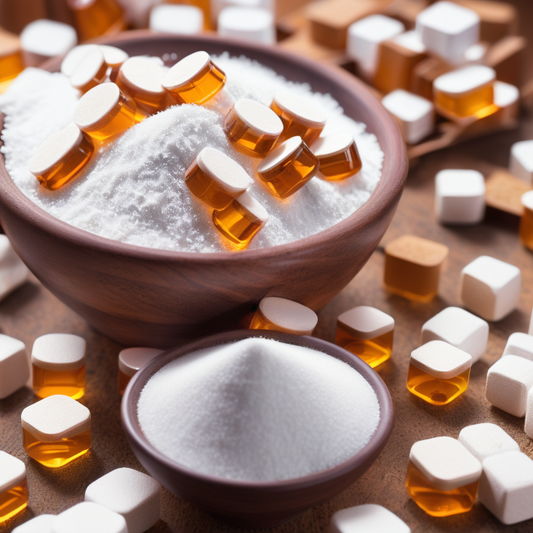Today’s supplement market is full of products that contain flashy colours and cheesy-attractive flavours. While they are meant to induce short-term pleasure during consumption, they have serious long-term implications. From impacting brain health and memory to allergies, similar to the vast variety of colours and tastes they offer, these products cause a wide variety of problems as well.
We are here to help you understand these flavors and how they impact your health. Backed by scientific evidence, researchers have shown that all that glitters is not gold. Hence, you need to reconsider your choices, because there is a possibility that the things you are doing to keep yourself healthy end up hurting your health even more.
The Colourful Deception: Unmasking Synthetic Additives
- What are synthetic colors and flavours? Artificial substances, created in laboratories, mimic the appearance and taste of natural ingredients.
- Why are they used? They're cheap, stable, and mask unpleasant tastes or odors.
- What is the historical perspective? Their use dates back to the late 19th century when coal tar dyes were first introduced to food.
- Today's reality: The supplement industry is a significant consumer, using them to make products more appealing to consumers.
What are the Health Risks of Synthetic Colours
Artificial colors might make your vitamins look slightly more colorful, but they are also terrible for your health. An allergic response is one of the most common side effects. Symptoms can range from mild rashes and stings to life-threatening anaphylaxis. Researchers have found that some artificial colors, predominantly Yellow 6 and Yellow 6, are more likely to make people with allergies sick.
Other research has shown that synthetic and added colors and flavors have led to the following symptoms:
- Hyperactivity in children: Studies suggest a link between synthetic colors and behavioral issues, leading to concerns about their safety in children's products.
- Long-term health concerns: Some studies suggest carcinogenicity and organ damage, especially to the liver and kidneys.
What are the Health Risks of Synthetic Flavours
As appealing as these flavors are, they are as hazardous as synthetic colors. Concerns have been raised about their severe effects on the digestive system, including various issues. From bloating and gas to irritable bowel syndrome (IBS), studies have shown that synthetic flavors disrupt the gut microbiome (collection of all good microorganisms with dedicated functions).
Other areas of concern include:
- Metabolic impact: Interference with natural processes can lead to weight gain, insulin resistance, and type 2 diabetes. Artificial sweeteners are a prime example.
- Neurotoxic effects: Disturbingly, research suggests negative impacts on brain health, affecting cognitive function, mood, and behavior. More investigation is needed, but caution is warranted.
Regulatory Roulette: The Lacklustre Oversight of Synthetic Additives
The countries are divided when it comes to regulations. Even though all of them have regulations, some are strict and help solve problems, while others are flexible, leaving consumers vulnerable to long-term health risks.
- United States (FDA): Regulation exists but is less stringent than food. Many synthetic additives are allowed without rigorous safety testing.
- Europe (EFSA): Acceptable Daily Intakes (ADIs) are established, but these are based on limited data and may not fully protect consumers.
- Bans and recalls: Red 3 (cosmetics) and six colors linked to hyperactivity in children (EU) serve as warnings of potential dangers.
The safety evaluations of synthetic additives are often flawed and biased, relying on industry-funded studies. These studies are often short-term and focus on acute toxicity, neglecting these additives' potential long-term health effects. Additionally, many studies fail to account for cumulative exposure to multiple synthetic additives, which can be significant for individuals who consume various processed foods and supplements.
Nature's Bounty: The Healthful Alternatives
But each problem has its solution. Natural and harm-free alternatives exist, and for good reasons.
- Natural colors: Derived from fruits, vegetables, and plants, they offer vibrant hues without health risks. Examples include beet juice, turmeric, spirulina, and annatto.
- Natural flavors: Extracted from fruits, herbs, spices, and other natural sources, they provide delicious taste without artificial aftertaste or potential hazards. Think fruit extracts, vanilla beans, peppermint oil, and ginger.
- Successful brands: Consumers increasingly seek clean labels and natural ingredients. Brands prioritizing these build trust and loyalty while improving product health and safety.
A better way? Using transdermal patches by PatchUP. These patches don’t have any added colors, so flavor is unnecessary, as they directly penetrate your skin. Transdermal patches are the future of the supplement industry and have showcased their superiority over other intake forms.
Empowering Your Choices: Making Informed Decisions About Supplements
- Reading labels: Look for FD&C colors, artificial flavors, and sweeteners. Choose products with natural alternatives instead.
- Asking questions: Inquire about the source of colors and flavors, the use of artificial additives, and safety testing. Reputable manufacturers will be transparent.
- Choosing brands: Prioritise those committed to natural and safe ingredients, using third-party testing, transparent sourcing and manufacturing, and prioritizing consumer well-being.
In Conclusion, Your Health is in Your Hands
Synthetic colors and flavors in supplements pose a multi-faceted threat to our health. Allergies, behavioral issues, metabolic disruption, and even potential brain damage are among the risks. More than regulatory oversight is needed; we must become informed consumers.
We take control of our well-being by diligently reading labels, questioning manufacturers directly, and choosing brands that prioritize natural ingredients. Remember, your body is your most valuable asset. Protect it with wise choices fueled by knowledge and a commitment to natural health.
References
- McCann, D., Barrett, A., Cooper, A., Crumpler, D., Dalen, L., Grimshaw, K., Kitchin, E., Lok, K., Porteous, L., Prince, E., Sonuga-Barke, E., Warner, J. O., & Stevenson, J. (2007). Food additives and hyperactive behavior in 3-year-old and 8/9-year-old children in the community: a randomized, double-blinded, placebo-controlled trial. Lancet, 370(9598), 1560–1567. https://doi.org/10.1016/s0140-6736(07)61306-3
- Arnold, L. E., Lofthouse, N., & Hurt, E. (2012). Artificial Food Colors and Attention-Deficit/Hyperactivity Symptoms: Conclusions to Dye for. Neurotherapeutics, 9(3), 599–609. https://doi.org/10.1007/s13311-012-0133-x
- Suez, J., Korem, T., Zeevi, D., Zilberman-Schapira, G., Thaiss, C. A., Maza, O., Israeli, D., Zmora, N., Gilad, S., Weinberger, A., Kuperman, Y., Harmelin, A., Kolodkin-Gal, I., Shapiro, H., Halpern, Z., Segal, E., & Elinav, E. (2014). Artificial sweeteners induce glucose intolerance by altering the gut microbiota. Nature, 514(7521), 181–186. https://doi.org/10.1038/nature13793
- Murley, T., & Chambers, E., 4th (2019). The Influence of Colorants, Flavorants and Product Identity on Perceptions of Naturalness. Foods (Basel, Switzerland), 8(8), 317. https://doi.org/10.3390/foods8080317





